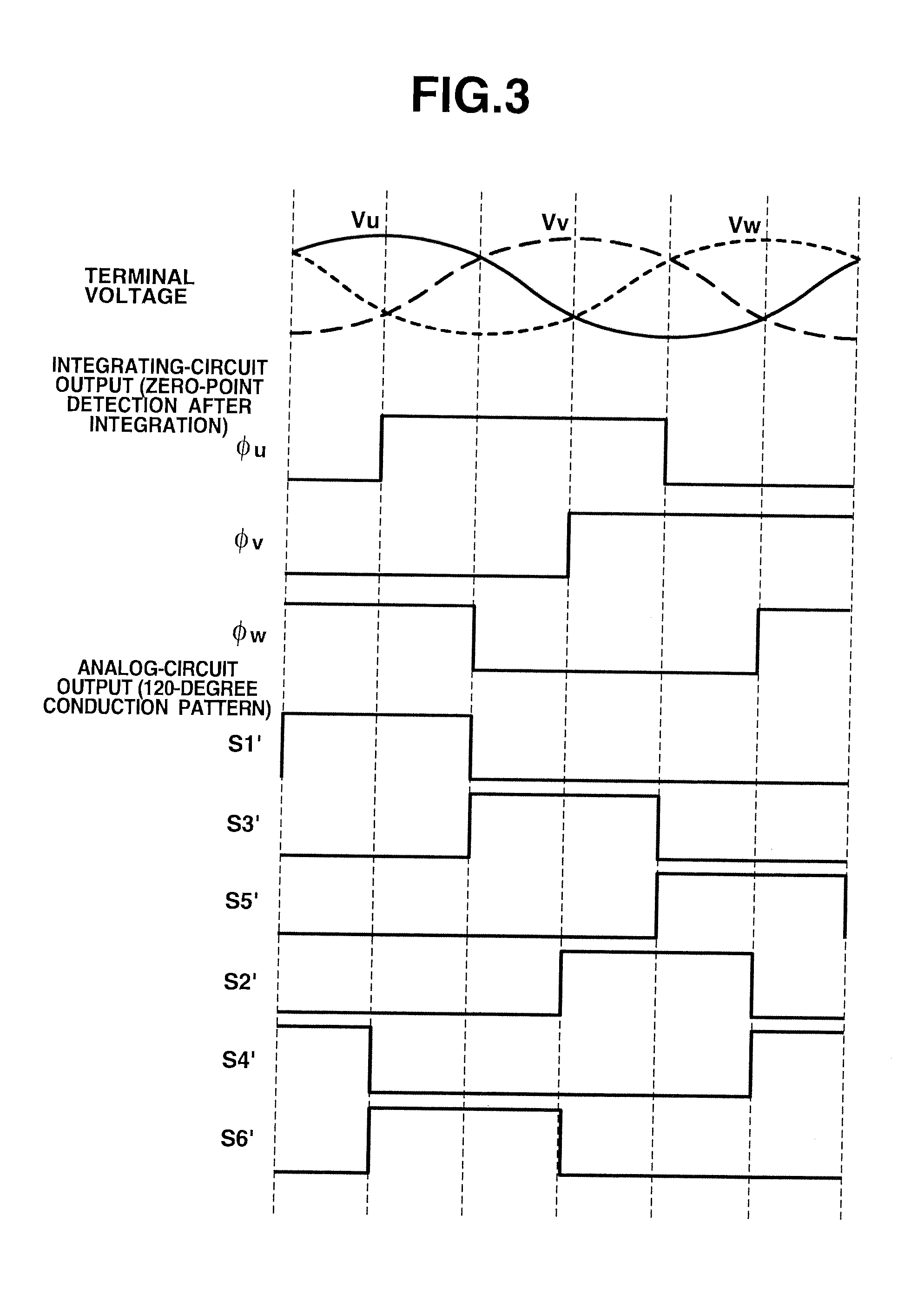Inverter control system
a control system and sensor technology, applied in the direction of motor/generator/converter stopper, dynamo-electric converter control, dynamo-electric gear control, etc., can solve the problems of difficult to adopt, complicated wire circuit for connecting additional devices, and computing-capacity limit, so as to reduce the size, cost and loss, and the effect of low arithmetic load
- Summary
- Abstract
- Description
- Claims
- Application Information
AI Technical Summary
Benefits of technology
Problems solved by technology
Method used
Image
Examples
first embodiment
[0029]An inverter control system in a first embodiment according to the present invention will now be explained referring to FIGS. 1 to 4. The inverter control system in the first embodiment includes a main circuit 1C and a current-control controller 3a.
[0030]As shown in FIG. 1, the main circuit 1C in the first embodiment is constructed in the same manner as a general voltage-source PWM (pulse-width-modulation) inverter, and includes an inverter INV having a three-phase and six-element circuit. In this embodiment, a controlled object (i.e., a variable which is mainly used for the control) is an electric-current which is inputted to the inverter INV. Direct current (the input current of inverter) between a smoothing condenser C and switching elements Sw1 to Sw6 (i.e., between the smoothing condenser C and the inverter INV) is detected or obtained by a current sensor CT or the like. As the current sensor CT, any component that can detect or obtain the current value is able to be empl...
second embodiment
[0042]FIG. 5 is a block diagram showing a speed-control controller of an inverter control system in a second embodiment according to the present invention. Parts which are constructed in the same manner as the first embodiment are given same reference signs as those in the first embodiment, and the detailed explanations thereof will be omitted.
[0043]A structure of a main circuit in the second embodiment is the same as that of first embodiment. The inverter control system in the second embodiment includes the speed-control controller 3b in place of the current-control controller 3a of the first embodiment. Moreover, the input command in the second embodiment is a speed command value.
[0044]In the second embodiment, the 120-degree conduction patterns S1′ to S6′ outputted from the sensorless circuit 10 are converted into a speed detection value by a speed detector 11.
[0045]Next, a subtracting section 12 calculates a speed difference (deviation) between the speed detection value and the ...
third embodiment
[0047]FIG. 6 is a block diagram showing an electric-power-control controller of an inverter control system in a third embodiment according to the present invention. Parts which are constructed in the same manner as the first embodiment are given same reference signs as those in the first embodiment, and the detailed explanations thereof will be omitted.
[0048]A structure of a main circuit in the third embodiment is the same as that of first embodiment. The inverter control system in the third embodiment includes the electric-power-control controller 3c in place of the current-control controller 3a of the first embodiment. Moreover, the input command in the third embodiment is an electric-power command value.
[0049]In the third embodiment, DC voltage value (a voltage between both ends of the smoothing condenser C, i.e., an input voltage to the inverter) is detected. An electric-power detector 14 multiplies this voltage detection value by the DC component of the current detection value ...
PUM
 Login to View More
Login to View More Abstract
Description
Claims
Application Information
 Login to View More
Login to View More - R&D
- Intellectual Property
- Life Sciences
- Materials
- Tech Scout
- Unparalleled Data Quality
- Higher Quality Content
- 60% Fewer Hallucinations
Browse by: Latest US Patents, China's latest patents, Technical Efficacy Thesaurus, Application Domain, Technology Topic, Popular Technical Reports.
© 2025 PatSnap. All rights reserved.Legal|Privacy policy|Modern Slavery Act Transparency Statement|Sitemap|About US| Contact US: help@patsnap.com



